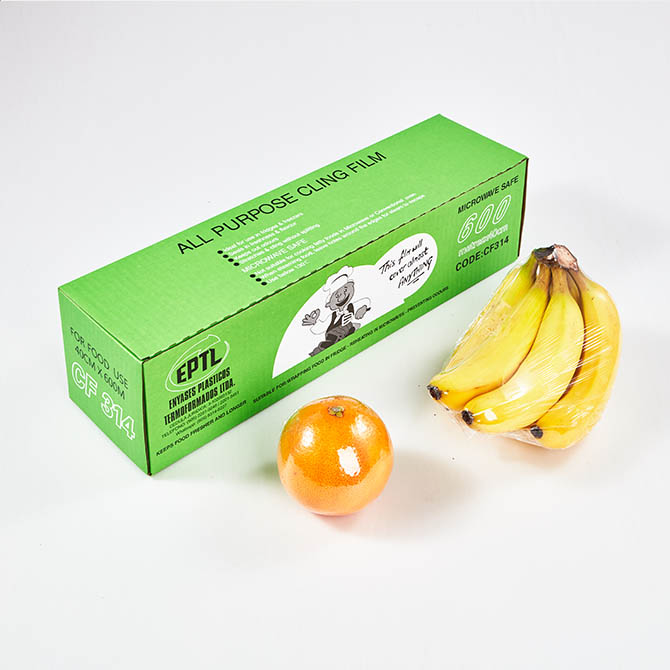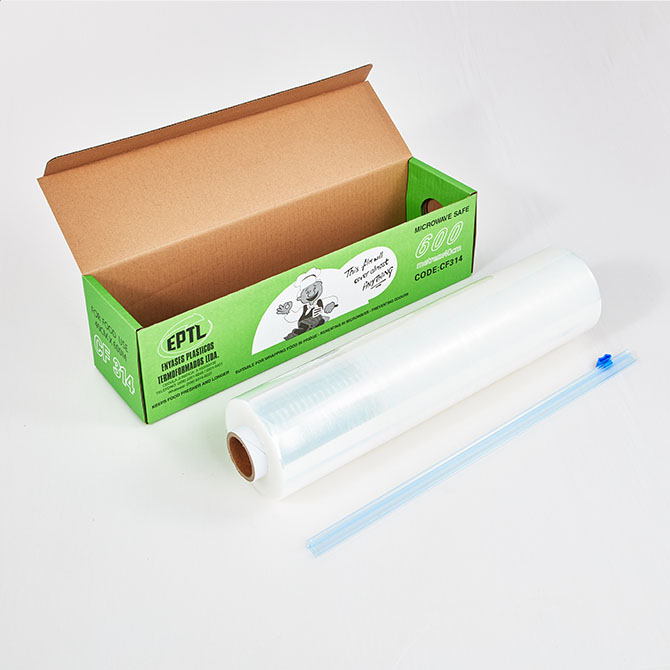We are committed to food packaging PVC cling film, PE cling film,stretch wrap, aluminum foil and other disposal food packing film/foil.

Language
>As global awareness of environmental protection continues to grow, the packaging industry is undergoing a profound transformation. Among the many consumer products being reimagined for sustainability, Cling Food Wrap has emerged as a focus of innovation. Traditionally made from PVC or PE plastics, cling wrap has been an indispensable tool for preserving food freshness in households, supermarkets, and the catering industry. However, the environmental challenges associated with plastic waste have driven manufacturers to rethink production processes and materials, paving the way for eco-friendly cling Food Wrap supported by sustainable manufacturing practices.

Rising Demand for Green Alternatives
The global demand for cling food wrap remains strong due to its essential role in food preservation. Yet, governments, retailers, and consumers are calling for alternatives that minimize environmental impact. According to industry reports, the global eco-friendly packaging market is expected to grow at a double-digit CAGR in the coming years, with Biodegradable Cling Wrap playing a critical role. This demand has encouraged manufacturers to shift from traditional petroleum-based plastics to biodegradable, compostable, and recyclable materials.
Supermarkets and foodservice operators are now prioritizing suppliers who can provide wraps that reduce plastic waste, align with circular economy principles, and comply with international environmental regulations such as the EU Single-Use Plastics Directive.
Materials Innovation in Cling Food Wrap Manufacturing
One of the key breakthroughs in eco-friendly cling wrap production lies in material innovation. Manufacturers are investing in research and development to replace conventional plastic with sustainable raw materials.
Biodegradable Films: Wraps made from PLA (Polylactic Acid) and PBAT (Polybutylene Adipate Terephthalate) offer similar stretchability and transparency to traditional plastic wraps but naturally degrade under composting conditions.
Plant-Based Alternatives: Some wraps are now derived from corn starch, sugarcane, or cellulose, providing an eco-conscious option that maintains the cling and barrier properties required for food protection.
Recyclable PE Wraps: Advances in polymer technology have also enabled the production of wraps made from 100% recyclable polyethylene, ensuring easier integration into existing recycling systems.
By adopting these materials, manufacturers are addressing the challenge of single-use plastic pollution while still delivering practical solutions for the food industry.
Sustainable Manufacturing Practices
Eco-friendly cling wrap is not just about material substitution; it also requires green manufacturing processes that reduce waste, conserve energy, and minimize carbon footprints. Leading manufacturers have implemented:
Closed-Loop Recycling Systems – Production scraps and off-cuts are collected, reprocessed, and reintroduced into the manufacturing cycle, reducing raw material waste.
Energy-Efficient Production Lines – Modern extrusion equipment uses less electricity, with some factories powered by renewable energy sources such as solar or wind.
Reduced Chemical Usage – Manufacturers are phasing out harmful additives like phthalates, instead using food-safe plasticizers that meet FDA and EU standards.
Water Conservation Techniques – Cooling and cleaning systems in factories are being upgraded to recycle water and reduce overall consumption.
Eco-Friendly Packaging for Rolls – Beyond the wrap itself, manufacturers are shifting to recyclable cardboard cores and minimalist packaging to further reduce waste.
These practices demonstrate how sustainability is being incorporated across the full production chain, rather than being limited to the product alone.
Challenges and Opportunities
While progress is significant, challenges remain. Biodegradable cling wraps often have higher production costs, making them less accessible for price-sensitive markets. Additionally, not all regions have the necessary composting or recycling infrastructure to handle eco-friendly alternatives effectively.
Nevertheless, these challenges present opportunities for innovation. Manufacturers are exploring cost reduction through economies of scale, partnerships with recycling facilities, and public education campaigns to raise awareness about proper disposal methods. At the same time, collaboration with global retailers and food producers is accelerating the adoption of green cling wrap solutions.
Market Outlook and Industry Collaboration
Industry experts predict that eco-friendly cling food wrap will account for a significant share of the packaging sector within the next decade. As consumer preferences shift, major supermarkets and global restaurant chains are partnering with manufacturers to test and adopt sustainable wrap options.
Organizations such as the Sustainable Packaging Coalition (SPC) and European Bioplastics are working closely with producers to establish standards, improve labeling, and promote best practices. Furthermore, international trade shows like Interpack and Pack Expo are showcasing eco-friendly wraps as a highlight of the packaging industry’s future.
Conclusion
The development of eco-friendly cling food wrap is a shining example of how sustainability and innovation can reshape even the most common household product. By investing in biodegradable materials, recyclable polymers, and green manufacturing practices, manufacturers are taking bold steps to reduce the environmental impact of food packaging.
As consumer expectations grow and regulatory pressures increase, the shift toward sustainable cling food wrap will continue to gain momentum. Ultimately, this transformation reflects a broader movement across industries: one where economic growth and environmental responsibility go hand in hand.